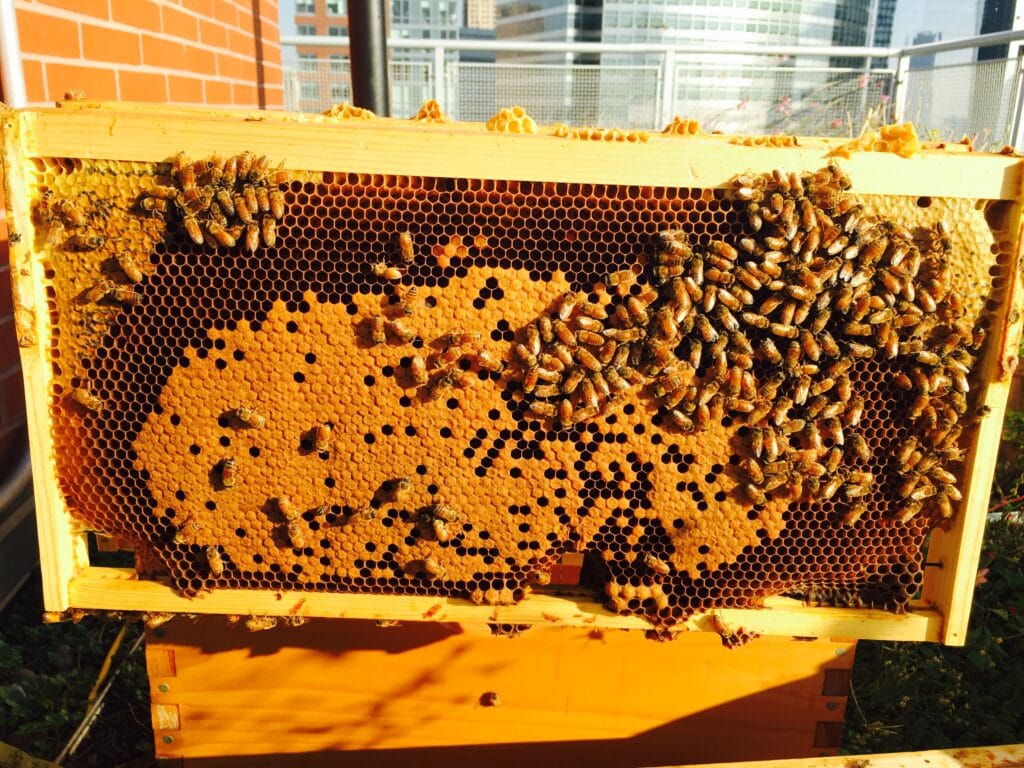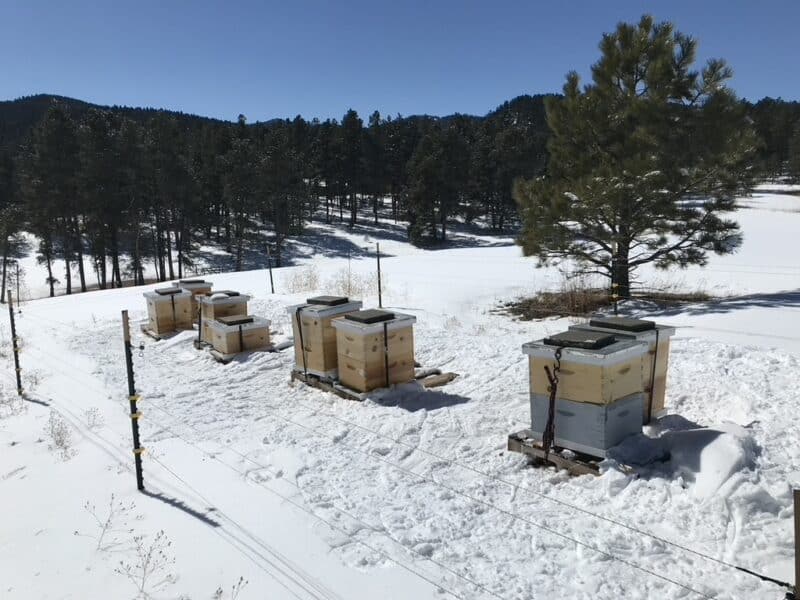From smoke pots and wooden hives to the Internet of Things: with smart hives, beekeeping leaps into the 21st century.
Since the invention of the wooden beehive 150+ years ago, there’ve been few innovations in beehive design. But that’s all changing now—at warp speed. Where other industries had the luxury to evolve slowly, beekeeping must deploy the latest technologies if it’s to function in the face of growing habitat loss, pollution, pesticide use and the spread of global pathogens.
Enter the “Smart Hive”
—a system of scientific bee care designed to precisely monitor and manage conditions in hives. Where traditional beekeepers might visit each hive on a weekly or monthly basis, smart hives monitor colonies 24/7, and so can alert beekeepers to the need for intervention as soon as a problem situation occurs.
“Until the advent of smart hives, beekeeping was really a mechanical process.” Says our founder and Chief Science Officer, Dr. Noah Wilson-Rich. “With technology we’re bringing bees into the Internet of Things. If you can adjust your home’s heat, turn lights on and off, see who’s at your front door, all from a smart phone, why not do the same with beehives?”
While many see the economic potential of smart hives—more precise pollinator management can have significant impact on the bottom line of farmers, orchardists and commercial beekeepers—Wilson-Rich and his team at Best Bees is most encouraged by their impact on bee health. “In the U.S. we lose almost half of our bee colonies each year.“ Says Wilson-Rich. “Smart hives allow for more precise monitoring and treatment, and that could mean a significant improvement in colony survival rates. That’s a win for everyone on the planet.”
The first smart hives to be released utilize solar power, micro-sensors and smart phone apps to monitor conditions in hives and send reports to beekeepers’ phones on the conditions in each hive. Most smart hive systems include monitors that measure hive weight, temperature, humidity, CO2 levels, acoustics and in some cases, bee count.
- Weight. Monitoring hive weight gives beekeepers an indication of the start and stop of nectar flow, alerting them to the need to feed (when weight is low) and to harvest honey (when weight is high). Comparing weight across hives gives beekeepers a sense of the relative productivity of each colony. A dramatic drop in weight can suggest that the colony has swarmed, or the hive has been knocked over by animals. And
- Temperature. Monitoring hive temperature can alert beekeepers to dangerous conditions: excessive heat indicating the hive should be moved to a shady spot or ventilated; unusually low heat indicating the hive should be insulated or protected from cold winds.
- Humidity. While honey production produces a humid environment in hives, excessive humidity, especially in the winter, can be a danger to colonies. Monitoring humidity levels can let beekeepers know that moisture build-up is occurring, indicating a need for better ventilation and water removal.
- CO2 levels. While bees can tolerate much higher levels of CO2 than humans, excessive levels can kill them. Monitoring CO2 levels can alert beekeepers to the need to ventilate hives
- Acoustics. Acoustic monitoring within hives can alert beekeepers to a number of dangerous situations: specific changes in sound patterns can indicate the loss of a queen, swarming tendency, disease, or hive raiding.
- Bee count. Counting the number of bees entering and leaving a hive can give beekeepers an indication of the size and health of colonies. For commercial beekeepers this can indicate nectar flow, and the need to relocate hives to more productive areas.
- Mite monitoring. Australian scientists are experimenting with a new gateway to hives that where bees entering hives are photographed and analyzed to determine if bees have picked up mites while outside the hive, alerting beekeepers of the need to treat those hives to prevent mite infestation.

Some of the more advanced (and expensive) smart hives are designed to automate much of standard beekeeping work. These can include environmental control, swarm prevention, mite treatment and honey harvesting.
- Environmental control. When data indicate a hive is too warm, humid or has CO2 build-up, automated hives can self-ventilate, optimizing internal environmental conditions.
- Swarm prevention. When weight and acoustic monitoring suggest that a colony is preparing to swarm, automated hives can change hive conditions, preventing a swarm from occurring.
- Mite treatment. When sensors indicate the presence of mites, automated hives can release anti-mite treatments such as formic acid. Some bee scientists are experimenting with CO2, allowing levels to climb high enough in hives to kill mites, but not high enough to endanger bees. Others are working on a prototype of a hive “cocoon” that raises internal temperatures to 108 degrees, a level of heat that kills most varroa mites.
- Feeding. When weight monitors indicate low levels of honey, automated hives can release stores of sugar water.
- Honey harvesting. When weight levels indicate an abundance of honey, self-harvesting hives can split cells, allowing honey to drain out of specially designed frames into containers below the hives, ready to tap by beekeepers.
While smart hives are just beginning to be adopted by beekeepers, forward thinkers in the industry are already looking at the next generation of technology.
- Mobile hives. With extreme weather conditions a persistent problem in much of the U.S., engineers are working on mobile hives that can monitor external environmental changes, receive weather alerts and relocate themselves to more protected areas, out of wind/sun/cold as needed. Think R2D2 with a hive inside. You
- Robotic bees. Scientists are developing tiny robotic bees that can be introduced into hives and perform dances that direct bees to better foraging areas and help them avoid places with pesticide problems.






